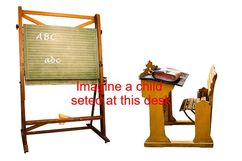7 steps to protect your children's vision from the rigors of the classroom
|
|
1. What part of vision is related to learning? Since 1988, mainly with the work of Ken Gibson, we know vision processing skills are the primary vision skills that influence leaning. The three most important of at least 12 vision processing skills are logic and reasoning, visualization, and selective attention.
Nearsightedness and astigmatism requiring compensative glasses have very little to do with learning.. They are the only conditions our limited school visual acuity can detect. I can remember my school visual acuity screening taken with the very target seen in the picture to the left. Yes, it missed the two vision conditions that made learning difficult for me! I passed with flying colors so my hidden vision conditions went undetected until after college and an Army stint at Walter Reed. It took a visit to my own developmental optometrist when I came to Lodi. Actually, the Dartmouth study in the 30's found the best students had the worst visual acuities. That proved two things. First, the school vision screening program detects the wrong childreen. Secondly visual acuity has nothing to do with learning. |

Vision processing skills are developed from birth and do not mature until age 6. Thus, we send our kids to school too soon because the schools present academics requiring these not yet developed skills. The good news is that these skills are learned and thereby can be treated. Go to VIP under Vision therapy to learn more about vision processing.
My colleagues emphasize a wandering eye at near vision oft called convergence insufficiency (CI) as a cause of learning difficulty.. Yes, it is a factor in learning but only makes but one grade difference like a B to a C. An A to an F is caused by vision processing difficulty. Actually any vision condition warrants treatment and is not ignored in our office. Yet, vision processing should not be ignored, nor should prevention in trying to reverse our nearsighted epidemic.
My colleagues emphasize a wandering eye at near vision oft called convergence insufficiency (CI) as a cause of learning difficulty.. Yes, it is a factor in learning but only makes but one grade difference like a B to a C. An A to an F is caused by vision processing difficulty. Actually any vision condition warrants treatment and is not ignored in our office. Yet, vision processing should not be ignored, nor should prevention in trying to reverse our nearsighted epidemic.
|
|
2. What is the best economical school vision screening that relates to learning for which the original mandate was written? The CA school vision screening mandate California Education Code 49452 goes back to 1947. It was modified in 2005 without the aid of optometrists who understand and treat vision processing, the vision condition that is most related to learning. Thus, the law changed very little. The goal of the law was to identify vision problems that may hinder learning. Current visual acuity school screening does not do that.
The vision screening program is costly to every school. School nurses are a part of the program, someone is paid to administer the test to the students, and there is follow-up. |

I offer a more effective method that is virtually no cost. It is simple. We know vision effects at least 80% of learning and we have the grades of all children. Simply inform parents that those with "C" (2.0) or lower should have their vision checked. There is another grade I am concerned about, and it may surprise you. It is "straight A.” Not all, but many of them, because of vision processing difficulty, are over driven.
Secondly, teachers need to be informed of observations they can make to determine early stages of a visually related learning problem. That actually is a part of California Education Code 49452 and is not done. A visit to this website gives the teacher all that is needed. Visit How can I tell if my student or child has a visually related learning problem? below. We also offer teacher in services that cover these observations.. As a simple example: a tight pencil grip or a fist grip is a clue. After all, writing is an EYE-hand activity!
Secondly, teachers need to be informed of observations they can make to determine early stages of a visually related learning problem. That actually is a part of California Education Code 49452 and is not done. A visit to this website gives the teacher all that is needed. Visit How can I tell if my student or child has a visually related learning problem? below. We also offer teacher in services that cover these observations.. As a simple example: a tight pencil grip or a fist grip is a clue. After all, writing is an EYE-hand activity!

3. At what age should reading be introduced? That age is SEVEN because our vision processing skill of reversal frequency is developed to the degree it is required to make a rapid discrimination between a "b" and a "d", a "p" and a "q", or "6" and a "9." As mentioned above in question #1, vision processing skills are not developed until age six. George Spache, an educator from Arizona found kids who were taught reading before age 7 were ahead of those who waited to age seven by the 4th grade. Yet, in high school, when reading counts, those who waited until after 7 were better readers. Why didn’t the US education system listen?
Scandinavian countries, ahead of us in education, did listen and wait until age 7.
Scandinavian countries, ahead of us in education, did listen and wait until age 7.
|
4.What happens if kids are introduced to academic skills above their age level?
That was my original article. We now see kids in kindergarten becoming nearsighted or developing a wandering eye (difficulty using eyes as a team).. In today’s classroom the vast majority of time is spent at desk work and to make it worse much of that is digital on PC screens or tablets. Looking within arms length viewing print of which the kindergartners are only vaguely familiar is very stressful on both the aiming (eyes looking together) and the focusing (clarity) system. If continued, something has to give and many difficult to reverse vision conditions emerge, two of which were mentioned above. In addition, the only way a child can get good grades of which they are oft overly motivated, only comes under stress. We then begin developing a cadre of memorizers and not visualizers. That is not good academics. Then when the child is released from stressful confinement in the classroom, a mountain of unnecessary academic homework is added, often digitally. In other words, not only is this bad for academics (we are way behind Scandinavian countries that teach to the child’s age), it is bad for their vision. |
|

5. Why are children introduced to academic content above their age level?
Certainly, no school district sits down and plots what can we do that will give us inferior academics and destroy our kids’ vision at the same time. I am convinced there are good intentions behind our school policies just as there were with Look and Say, No Child Left Behind, or Common Core.
My guess is educators misinterpreted the work of a famous Swiss psychologist, Piaget. He is credited with discovering that toddlers to kindergartners learn at a rapid rate. If I understand, they learn more rapidly than at any other time in a person’s life. However, they learn through their physical capabilities. They can learn shapes and their names, learn sequences, know the complicated names of dinosaurs, and identify their pictures. However, interpreting the alphabet requires vision processing skills not developed until six and directionality discrimination not developed until seven. Both are essential foundational skills in reading. Skeffington, the father of developmental optometry, discusses symbolic interpretation (reading) as a stress on the vision system.
Certainly, no school district sits down and plots what can we do that will give us inferior academics and destroy our kids’ vision at the same time. I am convinced there are good intentions behind our school policies just as there were with Look and Say, No Child Left Behind, or Common Core.
My guess is educators misinterpreted the work of a famous Swiss psychologist, Piaget. He is credited with discovering that toddlers to kindergartners learn at a rapid rate. If I understand, they learn more rapidly than at any other time in a person’s life. However, they learn through their physical capabilities. They can learn shapes and their names, learn sequences, know the complicated names of dinosaurs, and identify their pictures. However, interpreting the alphabet requires vision processing skills not developed until six and directionality discrimination not developed until seven. Both are essential foundational skills in reading. Skeffington, the father of developmental optometry, discusses symbolic interpretation (reading) as a stress on the vision system.

We simply loaded on educational demands of an adult on our kids innocently not realizing that rapid learning takes place in line with physical development.
Yes, you can learn from playing in the mud!
Yes, you can learn from playing in the mud!

6. What should be done to assure neither vision nor academics are harmed in the school setting?
☺ ½ year grade placement
☺ Boys start one year later than girls
☺ Appropriate vision screening (previously discussed in point 2 in our series)
☺ Furniture custom to a child - slanted desk and seat so elbows skim desk top.
☺ ½ year grade placement
☺ Boys start one year later than girls
☺ Appropriate vision screening (previously discussed in point 2 in our series)
☺ Furniture custom to a child - slanted desk and seat so elbows skim desk top.

☺ Eye breaks: look out a window preferably at greenery(at least every 15 minutes)
☺ Reduce the clutter in the classroom like artwork, posters, and charts (the worst one I’ve seen in local special ed. class. The kids were continually bombarded with distractions)
☺ Recess (never punish with the lack of recess)
☺ Allow movement in the classroom (sharpen a pencil, stand to answer questions)
☺ Intersperse near-intensive classes with non-near vision intensive ones (like reading then music)
☺ Teach arts as well as academics including music
☺ No homework until 7th grade
☺ Introduce alphabet no sooner than the last ½ of the 1st grade and reading at age 7
☺ No digital use until after 2nd grade
☺ Reduce the clutter in the classroom like artwork, posters, and charts (the worst one I’ve seen in local special ed. class. The kids were continually bombarded with distractions)
☺ Recess (never punish with the lack of recess)
☺ Allow movement in the classroom (sharpen a pencil, stand to answer questions)
☺ Intersperse near-intensive classes with non-near vision intensive ones (like reading then music)
☺ Teach arts as well as academics including music
☺ No homework until 7th grade
☺ Introduce alphabet no sooner than the last ½ of the 1st grade and reading at age 7
☺ No digital use until after 2nd grade
|
7. What can we do now as the US education system won’t change overnight? I do not wish to become Don Quixote tipping the windmills of the US Education system! To meet the classroom tasks that are about two years above kids' age level, we can enhance our children's vision systems above their age level. This can be done with some or all of the following:
|
|

1. Teach educators vision hygiene techniques that can be easily observed in the classroom so appropriate referrals can be made to optometrists trained in vision and learning.

2. Lens therapy with ½ Blue tint and ARC to mitigate the extreme eyestrain from desk work and digital devices.

3. Ball Play Procedure to enhance eye movements that are not yet developed to the level reading requires

4. Body alphabet to make letter discrimination easier as the shapes are rehearsed in large body movement.
|
|
5. Our Two Step Program is taking 2 Steps to be ready to learn without vision consequences.
STEP ONE First, have your child tested to determine if protective lenses for near-centered activities will help. In a high percentage of children, they are helpful. STEP TWO Secondly, enhance your child’s vision skills to better prepare your child for the vision-damaging academics of our current classrooms. We have available home-assisted activities based on the knowledge of a pioneer in vision care, Dr. Gerry Getman. We have outlined his book How to Develop Your Child’s Intelligence in a simple step-by-step sequence with a recording sheet to note your child’s progress. The book, outline, and recording sheets cost only $40.00. The same steps can be done for all the children in your family. Simply copy the progress sheet for each child. |

6. For ultimate results we can do enhancement vision therapy.